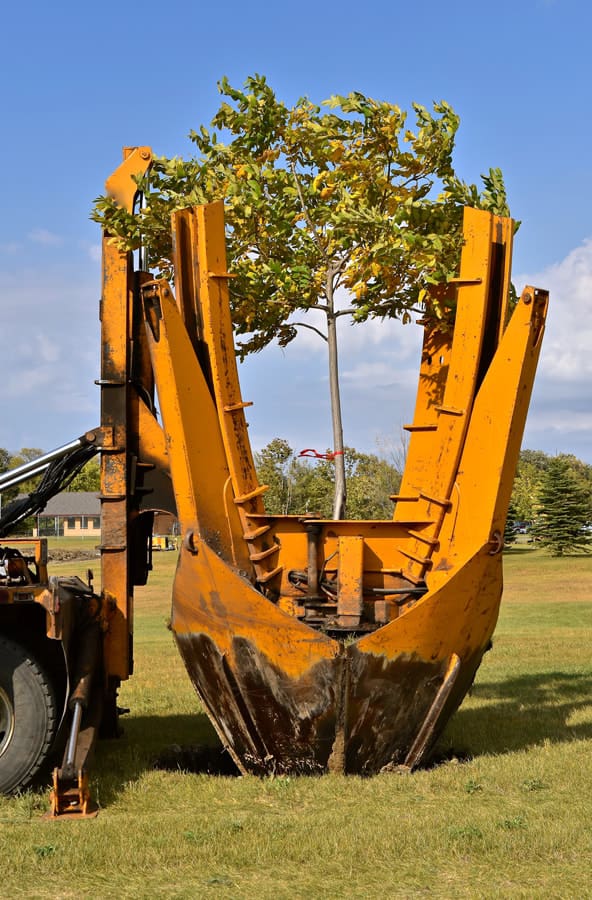Tree Trimming
Why Does Seasonal Tree Pruning Promote Healthy Growth?


As an arborist, I’ve witnessed the remarkable benefits of seasonal tree pruning firsthand. It’s like giving a tree a refreshing spa treatment, promoting healthy growth and vitality.
But why does this practice work so well? In this article, I’ll delve into the science behind it, exploring how tree pruning stimulates growth and what timing and techniques yield optimal results.
Whether you’re a homeowner or a fellow tree enthusiast, this guide will equip you with the knowledge to promote flourishing trees in your own backyard.
Benefits of Seasonal Tree Pruning
The benefits of seasonal tree pruning include improved tree health and overall growth.
Pruning is a crucial practice that involves the removal of dead, damaged, or diseased branches, as well as the shaping of the tree for aesthetic purposes.
By removing these unwanted branches, the tree is able to allocate its resources more efficiently, promoting healthier growth.


Pruning also helps in the prevention and control of diseases and pests, as it eliminates potential breeding grounds and improves air circulation within the canopy.
Additionally, seasonal pruning stimulates the production of new and stronger branches, ultimately enhancing the tree’s structural integrity.
Proper pruning techniques, such as making clean cuts and avoiding excessive pruning, are essential for maximizing the benefits and minimizing any potential harm to the tree.
How Tree Pruning Stimulates Healthy Growth
To further explore the benefits of seasonal tree pruning, let me explain how pruning stimulates healthy growth.
Tree pruning is a vital practice that promotes the overall health and vigor of trees. Here are five ways in which tree pruning stimulates healthy growth:
- Removal of dead or diseased branches: Pruning helps eliminate dead or diseased branches, preventing the spread of pests and diseases and allowing the tree to allocate resources more efficiently to healthy growth.
- Enhanced air circulation: By removing overcrowded branches, pruning improves air circulation within the tree canopy, reducing the risk of fungal infections and promoting healthier foliage.
- Promotion of new growth: Pruning stimulates the growth of new shoots and branches, encouraging the development of a stronger and denser tree structure.
- Improved sunlight exposure: By selectively removing branches, pruning allows more sunlight to reach the inner parts of the tree, promoting photosynthesis and aiding in the production of carbohydrates essential for growth.
- Shaping and directing growth: Pruning can help shape the tree’s form and direct growth in desired directions, ensuring a balanced and aesthetically pleasing structure.
Timing for Optimal Seasonal Tree Pruning
Now let’s delve into the best timing for optimal seasonal tree pruning.
Pruning trees at the right time is crucial to promote healthy growth and prevent damage. The timing depends on the specific tree species and its growth pattern.


Generally, it’s recommended to prune deciduous trees during their dormant season, which is typically in late winter or early spring before new growth begins. This allows the tree to recover quickly and promotes vigorous growth during the following growing season.
On the other hand, evergreen trees can be pruned throughout the year, but it’s best to avoid pruning during extreme weather conditions. Timing is essential to ensure that pruning doesn’t interfere with the tree’s natural growth cycle and helps to maintain the tree’s health and appearance.
Techniques for Effective Tree Pruning
For effective tree pruning, I prefer using sharp and clean tools. This ensures clean cuts and reduces the risk of disease transmission. Here are some techniques that I find most effective:
- Start by removing any dead, diseased, or damaged branches. This will improve the overall health of the tree and prevent the spread of infections.
- Use the three-cut method when pruning larger branches to avoid tearing the bark. Make an undercut first, then a top cut, and finally a final cut just outside the branch collar.
- Maintain the natural shape of the tree by selectively thinning branches rather than topping the tree. Topping can lead to weak regrowth and increased risk of storm damage.
- Prune branches that are crossing or rubbing against each other. This will prevent them from causing damage or becoming entangled.
- Finally, remember to sanitize your tools between cuts to prevent the spread of disease.
Common Mistakes to Avoid When Pruning Trees
One common mistake to avoid when pruning trees is neglecting to properly identify and remove dead, diseased, or damaged branches. Removing these branches is essential for the overall health and growth of the tree. Dead branches can become a breeding ground for pests and diseases, which can quickly spread throughout the tree and affect its vitality.
By removing these branches, you not only eliminate potential threats but also promote the tree’s growth by redirecting nutrients to healthier parts.
Another mistake to avoid is over-pruning. While pruning is necessary, excessive pruning can weaken the tree and make it more susceptible to stress and disease. It’s important to follow proper pruning techniques and consult a professional if you’re unsure about the extent of pruning required.


Hello there! I’m Logan Foster, the green-thumbed social media marketer behind the vibrant world of 1800TreeGuy.com. With roots firmly planted in arboriculture, I’ve branched out to help clients cultivate their dream outdoor spaces, one leafy canopy at a time. My knack for nurturing nature is more than a profession—it’s a way of life.
When I’m not talking trees and teaching the art of arboreal care, you can find me cheering on the Bulldogs—my alma mater’s pride and my forever team. My environmental studies there didn’t just teach me about ecosystems; they instilled a lifelong passion for protecting our planet.
Off the clock, I’m an adventurer at heart. Whether it’s trekking the Appalachian trails, pedaling down a mountain path, or crafting guides to share the wonders of the wild, I’m happiest with soil under my nails and the sun on my face. And let’s not forget Yoda, my pug sidekick. He may not have mastered the art of stillness, but his joyful grins are my daily dose of happiness.
I’m all about making connections—between people and the great outdoors and between my clients and their ideal landscape visions. My approach is personal; every tree has a story, and every garden reflects its caretaker.
If you want to green your scene or share in my outdoor escapades, give me a shout on Instagram or Facebook. Let’s cultivate a conversation and grow a community rooted in a love for the lush life.







